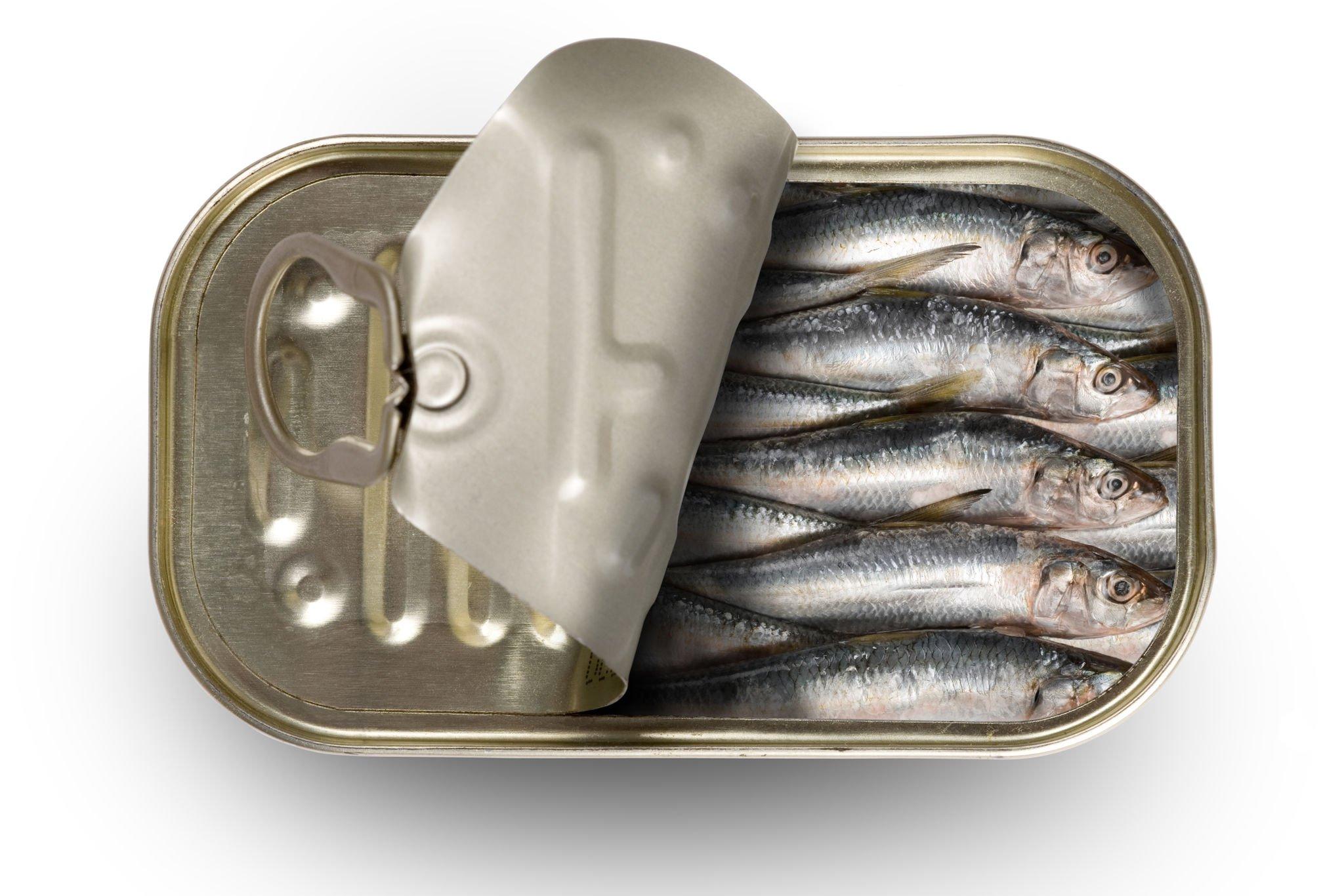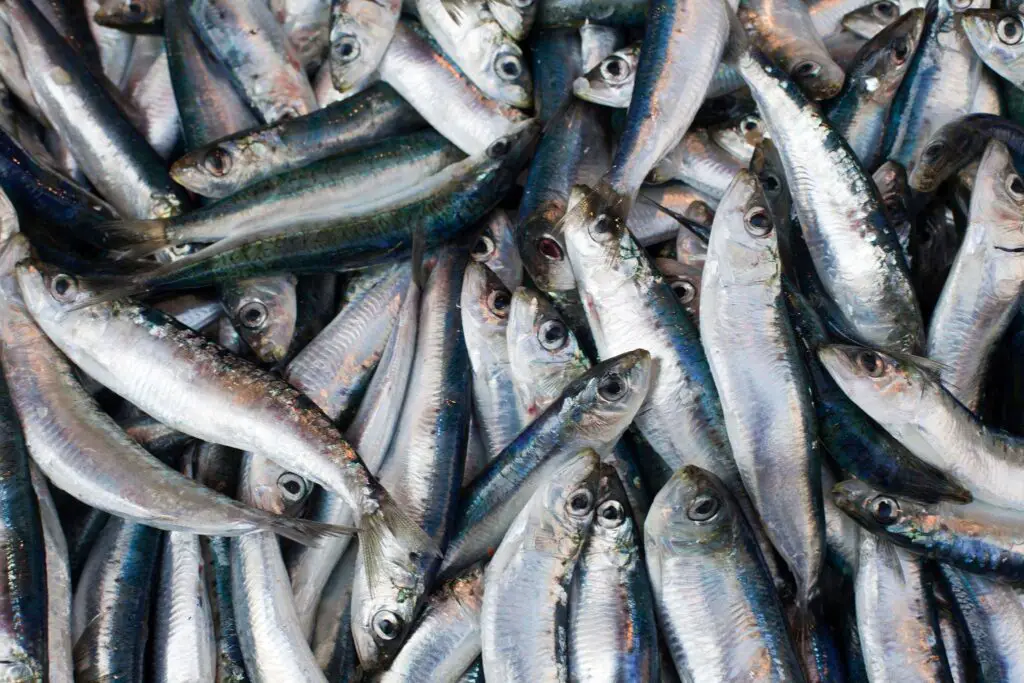Can You Eat Sardine Skin and Bones? Are They Safe to Eat?

When it comes to sardines, these tiny, flavorful fish have been gracing our plates for centuries, bringing a burst of umami to our taste buds. But amidst the delicious flesh, there’s one aspect that often raises eyebrows and piques curiosity: the sardine skin and bones. These tiny aquatic wonders have us wondering – can you really eat sardine skin and bones? And more importantly, are they safe?
Yes, you can eat sardine skin and bones. Some people even consider the bones and spines to be a special treat.
Let’s dive into this piscine topic and explore the nuances of sardine skin consumption. Prepare to dive into a gastronomic exploration that ventures beyond the ordinary, uncovering the potential pleasures and nutritional surprises that these often overlooked parts bring to the table. Whether you’re a seasoned food enthusiast or just casting your culinary nets, join us as we navigate the waves of information to consuming sardine skin and bones.
The Popularity of Sardines as a Nutritious Food
Sardines, often found canned or fresh, are a seafood enthusiast’s delight. These small fish are celebrated not only for their distinct taste but also for their impressive nutritional profile. Rich in omega-3 fatty acids, protein, and essential minerals like calcium and phosphorus, sardines offer a hearty dose of health benefits.
Culinarily, sardines are versatile. From grilling and pan-searing to adding them to pastas and salads, the flesh of sardines finds its way into a variety of dishes. Their robust flavor complements a wide range of ingredients, making them a culinary powerhouse.
Moreover, sardines are an excellent source of protein, providing all the essential amino acids our bodies need. This makes them a valuable addition to diets, especially for those looking to build and repair muscles.
Beyond taste and culinary versatility, sardines have gained popularity due to their sustainability. With a short food chain and abundant populations, they are considered an environmentally friendly seafood choice. This means you can enjoy sardines guilt-free, knowing that your choice aligns with responsible consumption. In a world where health-consciousness and sustainability are increasingly important, sardines stand out as a nutritious and eco-friendly food option.
Can You Eat Sardine Skin?
The skin of a sardine might not be as immediately appealing as its flesh, but it’s not something you should dismiss outright. The skin, while slightly tougher than the delicate flesh, contributes an interesting texture to the overall experience. Imagine a gentle chewiness that holds onto the flavors of marinades and seasonings.
However, the key question remains: Is it safe to eat sardine skin? Absolutely. The skin is entirely edible and contains a good amount of nutrients. If you’re new to trying sardine skins, consider marinating and grilling them. The high heat imparts a delectable smokiness while rendering the skin more palatable.
In countries like Japan, where attention to culinary detail is a hallmark, sardine skin finds its way into dishes like “iwashi no nitsuke“, a delectable simmered sardine dish where the skin becomes tender and adds an extra layer of complexity to the meal.
Similarly, in Mediterranean cuisines, sardine skin is sometimes enjoyed grilled to a crisp, creating a delightful contrast between the crunchy exterior and the tender fish inside.
Are Sardine Bones Safe to Eat?
Ah, the bones—perhaps the most contentious part of the sardine. The thought of munching on bones might raise eyebrows, but fear not, it’s a practice that’s been around for ages. The texture of sardine bones can be a concern for some, as they’re tiny and delicate. However, when cooked, these bones soften and become much less intimidating.
Safety-wise, sardine bones are generally safe to eat, but chewing thoroughly is crucial to preventing any potential issues. In fact, sardine bones can actually be a good source of calcium, the very mineral essential for strong bones and teeth. If the idea still seems daunting, you can opt for boneless sardines, which are readily available in stores.
Nutritional Profile and Benefits of Sardine Skin and Bones

Sardines are a rich source of protein, providing essential amino acids that support muscle growth and repair. For those concerned about bone health, sardines deliver a hefty dose of calcium and vitamin D, both vital for strong bones and teeth.
It’s no wonder that people are incorporating these little fish into their diets in various ways, from topping salads to making flavorful pasta dishes.
In fact, let’s take a closer look at the nutritional content of sardines in the table below:
| Nutrient | Amount per 3.75 oz (106g) serving |
| Calories | 177 |
| Protein | 21 grams |
| Omega-3 Fatty Acids | 1,480 milligrams |
| Calcium | 351 milligrams |
| Vitamin D | 270 IU |
Comparing the nutritional content of the skin to the flesh, you’ll find similarities and differences. While the skin may not have as much protein as the flesh, it compensates by being a source of healthy fats and collagen, which is great for skin health.
Benefits of Eating Sardine Skin
Now, let’s shift our focus to sardine skin. This often-overlooked part of the fish holds a surprising array of nutrients. Collagen, protein, and healthy fats are the key players in sardine skin composition. Collagen, in particular, is worth highlighting. Not only is it a fundamental protein for maintaining skin health, but it also has culinary applications that might surprise you.
Below you will find the benefits of eating sardine skin regularly:
Texture Sensation: The skin, when crisped up, offers a delightful contrast to the tender flesh of the sardine. It’s a textural adventure for your taste buds.
Nutritional Boost: Sardine skin, like the rest of the fish, contains a healthy dose of omega-3 fatty acids. These fats are renowned for their heart-healthy benefits and contribution to brain function.
Collagen Source: The skin is also a good source of collagen, a protein that supports skin elasticity and joint health.
Advantages of Consuming Sardine Bones:
Calcium Boost: Sardine bones are a rich source of calcium, a mineral vital for maintaining strong bones and teeth. They provide a natural alternative to dairy products for those seeking to increase their calcium intake.
Added Crunch: Just like the skin, sardine bones offer a crunchy texture that can enhance the overall dining experience. When cooked, they become soft enough to chew, ensuring safe and enjoyable consumption.
Nutrient Treasure: These tiny bones also contain trace minerals like phosphorus and magnesium, which contribute to various bodily functions such as energy production and nutrient absorption.
Comparative Analysis: Sardine Skin vs. Sardine Flesh
Taste and Texture: Now, let’s compare the experience of sardine skin to the flesh. The skin offers a unique texture—crispy when prepared well—adding an extra layer of enjoyment to your meal. On the other hand, the flesh provides that familiar, tender bite. Your preference might depend on whether you’re seeking a crunch or a melt-in-your-mouth sensation.
Nutritional Profile: Nutritionally, sardine skin and flesh have distinct attributes. While both are rich in omega-3 fatty acids, the skin boasts additional collagen content. On the other hand, the flesh offers a higher protein concentration. Your choice might hinge on which nutrients align better with your dietary goals.
Safety of Eating Sardine Skin and Bones
While the notion of eating sardine skin and bones is intriguing, ensuring safety remains a top priority. Here are some steps to take for a worry-free dining experience:
- Thorough Cooking: Whether you’re grilling, baking, or pan-frying sardines, ensure they are cooked thoroughly. Adequate cooking not only enhances flavor but also eliminates potential pathogens that might be present on the skin or bones.
- Cleaning Precautions: Before cooking, give the sardine skin a thorough rinse to remove any dirt or impurities. This practice reduces the risk of consuming contaminants that might be present on the skin.
- Bone Softening: Cooking the sardines until they are tender ensures that the bones are safe to eat. Softened bones practically dissolve, making them easy to chew and digest.
- Mindful Consumption: While sardine bones are generally safe to eat, individuals who have dental issues or swallowing difficulties should exercise caution. It’s always wise to listen to your body and make choices that align with your comfort level.
Traditional Culinary Practices involving Sardine Bones
Eating sardine bones isn’t a modern fad; it’s a practice rooted in tradition. In many cultures, particularly those near coastal areas, using the whole fish—bones and all—is commonplace. Think of Mediterranean cuisine, where dishes like “sarde a beccafico” celebrate the unique texture and flavor that bones bring to the plate.
In such dishes, the bones add a certain depth and character that’s hard to replicate. And, importantly, they contribute to minimizing food waste, a growing concern in today’s world.
Culinary Techniques for Eating Sardine Skin and Bones
Palatable Preparations: Sardine skin and bones might not be your immediate go-to, but with the right culinary techniques, they can become delightful additions to your table. Here’s how:
- Grilling: Grilling sardines lends a smoky flavor that complements the skin’s texture and bones’ crunch.
- Frying: Frying provides a crispy texture to the skin and bones, making them akin to a savory snack.
- In Soups and Stews: Simmering sardines in soups or stews allows the flavors to meld while softening the skin and bones.
To truly appreciate sardine skin and bones, why not try them in these recipes?
- Sardine Skin Tacos: Crispy sardine skin in a taco adds an exciting crunch and unique flavor.
- Crispy Sardine Skin Chips: Transform sardine skin into delectable chips by baking them until they’re golden and crispy. Sprinkle with your favorite seasonings for an irresistible snack.
- Sardine Skin Salad Topper: Enhance your salads with pieces of grilled sardine skin. They’ll add a satisfying crunch and a burst of savory goodness to your greens.
- Sardine Bone Broth: Boil sardine bones to create a rich and flavorful broth base for soups and risottos.
Cultural Culinary Delights: Across the globe, various cultures embrace the notion of using the entire fish. In Japan, “Iwashi no Nitsuke” showcases sardine skin’s potential when simmered in a soy-based broth. Italian cuisine, on the other hand, brings us “Sarde a Beccafico,” a dish where sardine bones contribute to a delightful stuffing.
Culinary Inspirations: Dishes Featuring Sardine Skin and Bones
If you’re ready to embark on a culinary adventure and embrace the full potential of sardines, here are some mouthwatering ideas to consider:
| Dish | Description |
| Crispy Sardine Tacos | Stuff sardine fillets, complete with crispy skin and softened bones, into warm tortillas. Top with fresh veggies and zesty lime for a delightful taco experience. |
| Sardine and Potato Hash | Create a hearty hash by sautéing sardine chunks, skin, and bones with diced potatoes and savory seasonings. Top with a sunny-side-up egg for a complete meal. |
| Mediterranean Sardine Salad | Toss sardine fillets, flaked skin, and bone fragments with vibrant Mediterranean ingredients like olives, tomatoes, and feta cheese. Drizzle with olive oil and balsamic vinegar. |
Conclusion
When it comes to eating sardine skin and bones, you might wonder if it’s a safe and worthwhile endeavor. The answer is a resounding “yes.” Not only are sardine skin and bones edible, but they also offer a wealth of nutrition and culinary possibilities. These often-overlooked parts of the fish hold hidden treasures that can enhance your seafood dining experience.
Sardine skin and bones are packed with nutrition, boasting a significant amount of omega-3 fatty acids, known for their heart-healthy benefits. Additionally, the collagen content in sardine skin can work wonders for your skin and joints. To make the most of these benefits, it’s crucial to prepare and cook sardine skin and bones properly, ensuring both safety and enjoyment.
Exploring sardine skin and bones in cuisine opens up a world of delectable options. From crispy skin delicacies to incorporating bones in savory dishes, there’s no shortage of ways to savor these nutrient-packed components. So, next time you indulge in sardines, remember to relish every part—from the crunchy skin to the tender bones—and embark on a culinary journey that’s both delicious and nutritious.
FAQs on Eating Sardine Skin and Bones
Is it safe to eat sardine skin and bones regularly?
Eating sardine skin and bones in moderation is safe and healthy due to their nutritional benefits. However, excessive consumption may lead to calcium intake concerns.
How can I prepare sardines with skin and bones?
You can grill, bake, or pan-fry sardines with skin and bones. Cooking them with a flavorful sauce or marinade can enhance their taste.
What if I don’t like the texture of sardine bones?
You can mash or finely chop the sardine bones before consumption to make them less noticeable if texture is a concern.
Can children safely eat sardine skin and bones?
Yes, children can safely consume sardine skin and bones, as they provide essential nutrients crucial for their growth and development.
Do canned sardines contain edible skin and bones?
Canned sardines typically include the skin and bones, making them a convenient and nutritious option.
Can eating sardine skin and bones cause choking hazards?
The soft bones in sardines are generally safe to eat and are unlikely to cause choking in adults. However, young children should be supervised while eating sardines.






